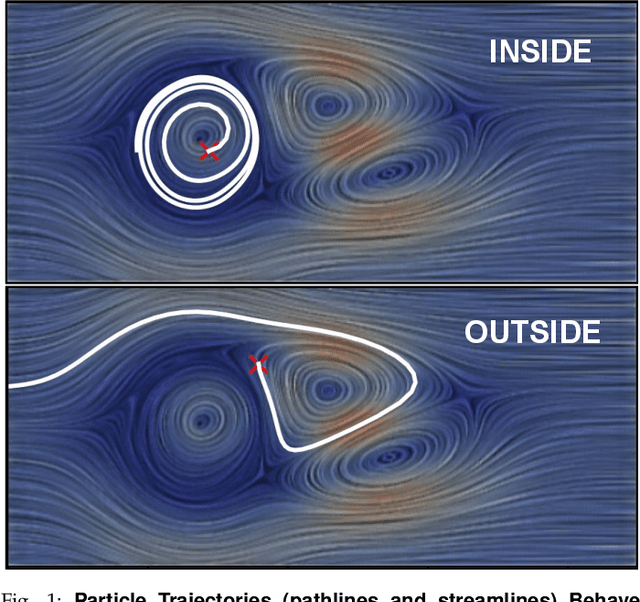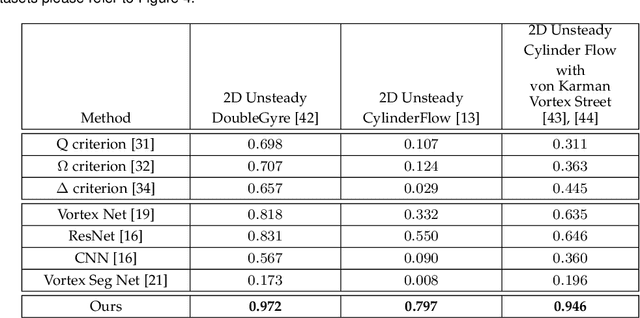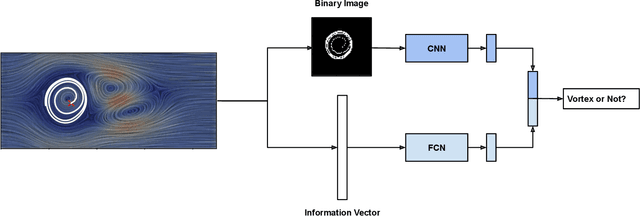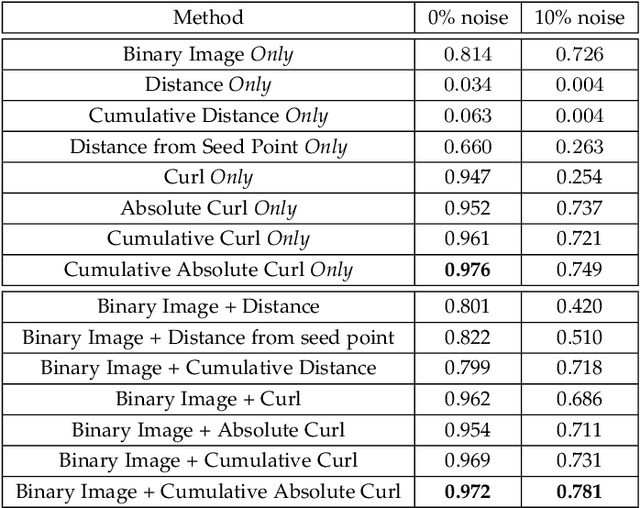Fahim Hasan Khan
VortexViz: Finding Vortex Boundaries by Learning from Particle Trajectories
Apr 01, 2024



Abstract:Vortices are studied in various scientific disciplines, offering insights into fluid flow behavior. Visualizing the boundary of vortices is crucial for understanding flow phenomena and detecting flow irregularities. This paper addresses the challenge of accurately extracting vortex boundaries using deep learning techniques. While existing methods primarily train on velocity components, we propose a novel approach incorporating particle trajectories (streamlines or pathlines) into the learning process. By leveraging the regional/local characteristics of the flow field captured by streamlines or pathlines, our methodology aims to enhance the accuracy of vortex boundary extraction.
ANNA: A Deep Learning Based Dataset in Heterogeneous Traffic for Autonomous Vehicles
Jan 21, 2024Abstract:Recent breakthroughs in artificial intelligence offer tremendous promise for the development of self-driving applications. Deep Neural Networks, in particular, are being utilized to support the operation of semi-autonomous cars through object identification and semantic segmentation. To assess the inadequacy of the current dataset in the context of autonomous and semi-autonomous cars, we created a new dataset named ANNA. This study discusses a custom-built dataset that includes some unidentified vehicles in the perspective of Bangladesh, which are not included in the existing dataset. A dataset validity check was performed by evaluating models using the Intersection Over Union (IOU) metric. The results demonstrated that the model trained on our custom dataset was more precise and efficient than the models trained on the KITTI or COCO dataset concerning Bangladeshi traffic. The research presented in this paper also emphasizes the importance of developing accurate and efficient object detection algorithms for the advancement of autonomous vehicles.
RipViz: Finding Rip Currents by Learning Pathline Behavior
Feb 25, 2023



Abstract:We present a hybrid machine learning and flow analysis feature detection method, RipViz, to extract rip currents from stationary videos. Rip currents are dangerous strong currents that can drag beachgoers out to sea. Most people are either unaware of them or do not know what they look like. In some instances, even trained personnel such as lifeguards have difficulty identifying them. RipViz produces a simple, easy to understand visualization of rip location overlaid on the source video. With RipViz, we first obtain an unsteady 2D vector field from the stationary video using optical flow. Movement at each pixel is analyzed over time. At each seed point, sequences of short pathlines, rather a single long pathline, are traced across the frames of the video to better capture the quasi-periodic flow behavior of wave activity. Because of the motion on the beach, the surf zone, and the surrounding areas, these pathlines may still appear very cluttered and incomprehensible. Furthermore, lay audiences are not familiar with pathlines and may not know how to interpret them. To address this, we treat rip currents as a flow anomaly in an otherwise normal flow. To learn about the normal flow behavior, we train an LSTM autoencoder with pathline sequences from normal ocean, foreground, and background movements. During test time, we use the trained LSTM autoencoder to detect anomalous pathlines (i.e., those in the rip zone). The origination points of such anomalous pathlines, over the course of the video, are then presented as points within the rip zone. RipViz is fully automated and does not require user input. Feedback from domain expert suggests that RipViz has the potential for wider use.
 Add to Chrome
Add to Chrome Add to Firefox
Add to Firefox Add to Edge
Add to Edge